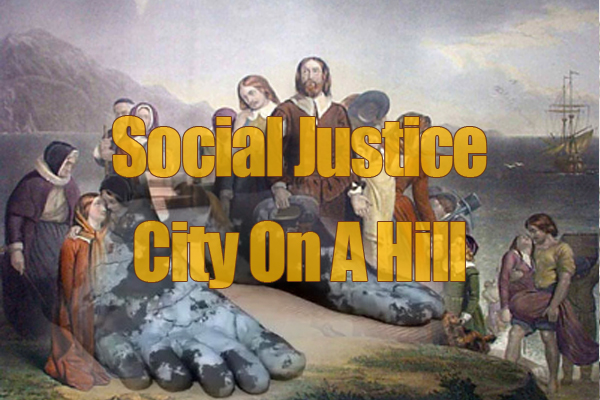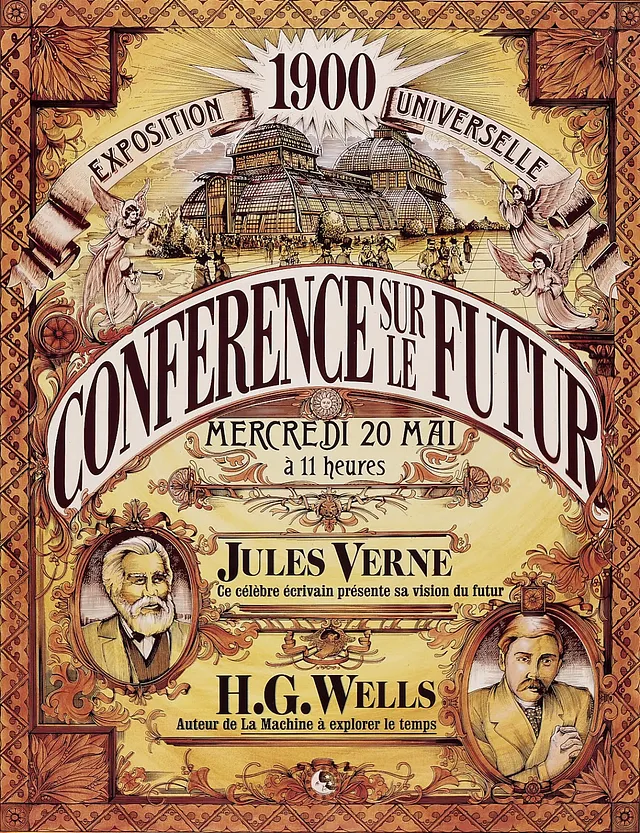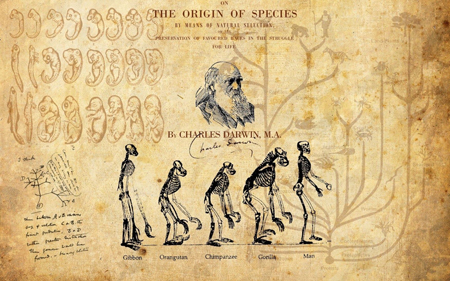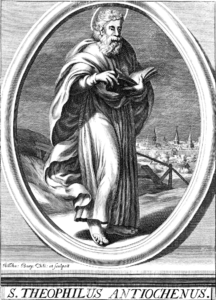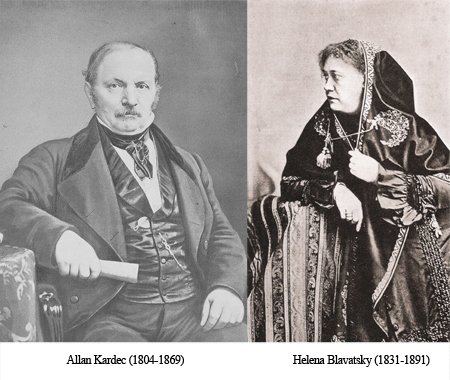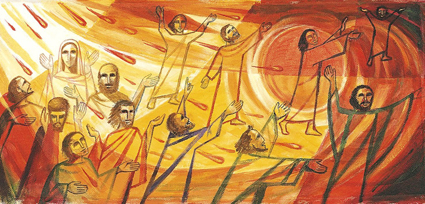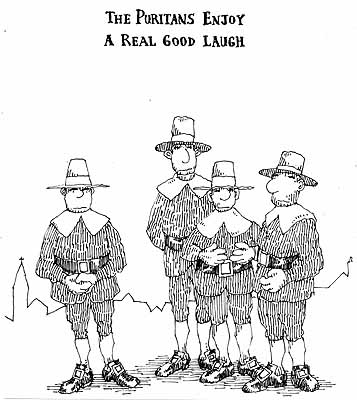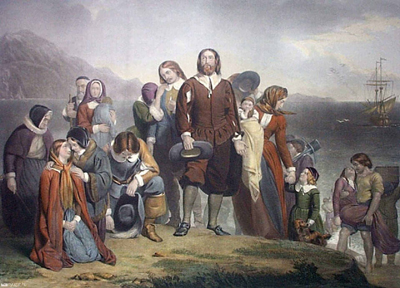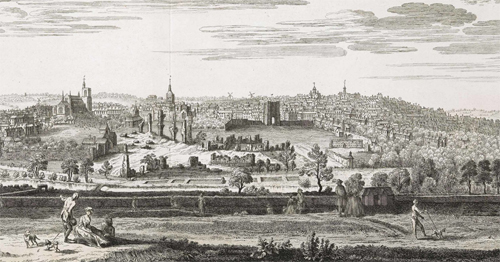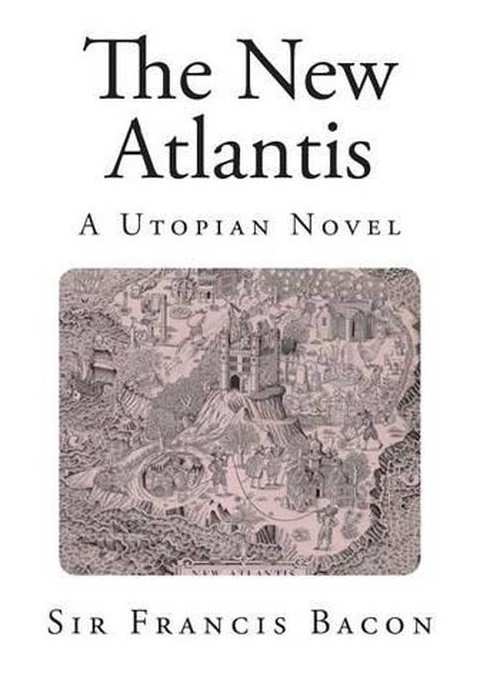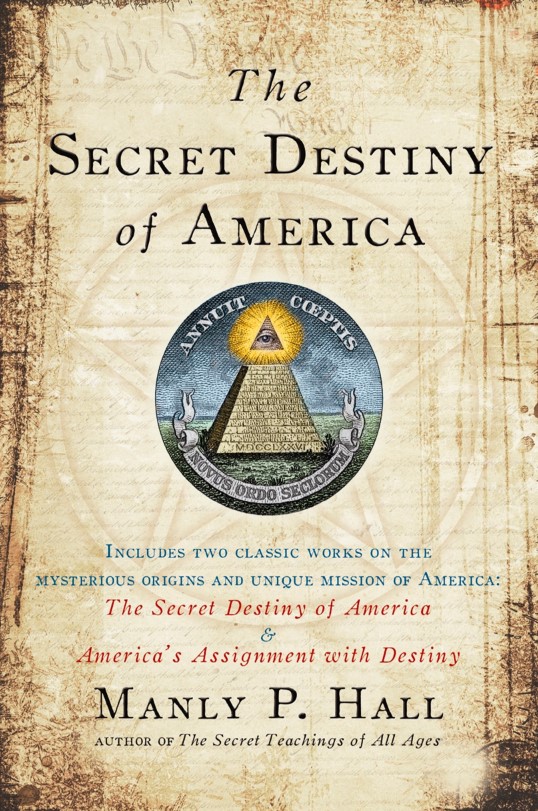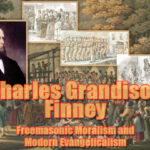We were taught in church that America was founded on christian principles, many Christians today believing that we have a responsibility to reclaim America for Christ, repent for the sins of our nation, restore the country’s greatness, etc….
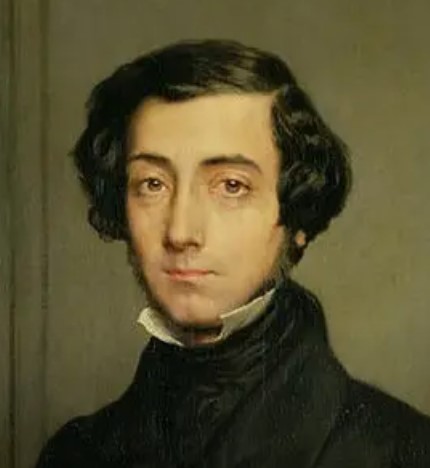
The idea of American exceptionalism goes all the way back to its earliest days, seen in the words of French political philosopher and historian Alexis de Tocqueville, who observed in his two-volume 1835/1840 work, Democracy in America:
“The position of the Americans is therefore quite exceptional… Their strictly Puritanical origin… have singularly concurred to fix the mind of the American upon purely practical objects. His passions, his wants, his education, and everything about him seem to unite in drawing the natives of the United States earthward; his religion alone bids him turn, from time to time, a transient and distracted glance to heaven…
[The widely distributed] McGuffey Readers… hailed American exceptionalism, manifest destiny, and America as God’s country….” Wikipedia
I keep repeating this, I know, but it bears repeating ad nauseum today: The idea of God blessing a nation is an Old Testament concept under the Old Covenant. In the New Testament, Jesus leaves no room for doubt about this when He says;
My kingdom is not of this world… (Jn 18:36)
In this article I’ll be taking a closer look at the Puritan’s role in the development of American Christianity and the Social Gospel.
Context is King!
19th Century Optimism
Let’s start out with an overview of the eventful 19th century. The burgeoning progress of science, technology and capitalism created a great optimism. The general belief was that even though times were tough, they were going to get better. You see this optimism reflected in the Positivist Philosophy of Auguste Comte and in Jules Verne’s adventure novels.
The 19th century marked the (supposed) “end of the Enlightenment” and rise of a host of lovely “new” ideas including Karl Marx’s Socialism, Scientific Philosophy (which would become Naturalistic Science) and Charles Darwin’s theory of Evolution, held by avowed atheists, originated in the ancient Philosophical/Mystery School belief that man was nothing more than “stardust.”
Science’s claim that “we are stardust” is the same as saying “WE ARE THE WORLD,” the Pantheistic belief (Monism) that we are part of God and One with creation.

But Jesus’ prayer recorded in the book of John states.
I pray for them: I pray not for the world, but for them which thou hast given me; for they are thine… (Jn 17:9a)
Not only are we NOT the world, we are not OF the world.
…because they are not of the world, even as I am not of the world. (Jn 17:14b)
They are not of the world, even as I am not of the world. (Jn 17:16)
The word translated “world” is “Kosmos,” G2889 which means “orderly arrangement.” These verses make it clear that God is separate from His creation. The word “Kosmos” referring to the very material that makes up carnal reality… (ie “stardust”).
It’s an inversion of the Truth. Everything the enemy brings is an inversion.
I was curious where this idea of man being “Stardust” originated, and learned that it was held by the ancient Greek philosophers. The website Liberty Forums shows us through the writings of Patriarch Theophilus of Antioch that the early church was well aware of this.
“2nd century Theophilus of Antioch speaks extensively about how some pagan Greeks believed in evolution theory and atheism. Here we read about the supposed evolution of life from stardust:
“On the fourth day the luminaries came into existence. Since God has foreknowledge, he understood the nonsense of the foolish philosophers who were going to say that the things produced on earth come from the stars, so that they might set God aside [1 Thess. 4:8]” (Oxford Early Christian Texts, “Theophilus of Antioch: Ad Autolycum” translated by Robert M.Grant, p.51).
So way back in the 2nd century A.D. we see how one of the early church fathers was speaking… about a belief held by ancient Greek philosophers… that our existence is uncreated and… we were produced by the stars. – Liberty Forums

The 19th century also saw Samuel Morse’s telegraph change the world. It was a time of Social Reform, with the rise of the abolition and women’s suffrage movements.
Alongside these “advancements” Spiritism rose in popularity with mystic founders like Roman Catholic science and philosophy enthusiast Allan Kardec, and Helena Blavatsky, who founded Theosophy, the precursor to today’s New Age Movement.
It was in this atmosphere of increased experiential contact with the spirit world that Pentecostalism arose.
A century purportedly built on “reason” being marked by an increased interest in the supernatural might seem contrary, but it makes perfect sense in the context of the Mystery School dialectic of Intellectualism / Mysticism. (Col 2:8)
OK, so how did the church get involved in the Social Justice movement aka Christian Liberalism?
Great question! To answer it we need to go back and take a closer look at the people who brought Christianity to America.
Enter The Puritans!
The Puritans were strong advocates of Social Justice, which was promoted by all the revivalists. These ideas were foundational in the development of what we know today as the Social Gospel.
“The social gospel is a name for the idea of reforming society or fixing social problems in the name of Christianity. It involves trying to promote Christian values, usually without actually promoting Christ and His narrow road to heaven. Many large “Christian” ministries are involved in this social gospel today.” Coming in the Clouds
So, while it might come as a surprise, it was actually the Puritans who brought the Social Gospel / aka Christian Liberalism to America.
True story. This connection is well made by writer, classicist, and podcaster Paul Krause in his article; The Puritan Origins of American Progressivism,
“Puritan theology—itself deeply influenced by the social justice emphasis of Prophetic Judaism, albeit anchored by the stern God of Isaiah and Ezekiel moreover than the passive sacrificial lamb of Jesus of Nazareth. This is what gives the Puritans their conservative connotations, even though their own theology was heavily influenced by Enlightenment scientific understanding—especially that of Newton.” – HesiodsCorner, bold and underline added. (Krause is the editor of online arts and humanities journal VoegelinView).
Newton!?* – Yup! We can thank the Puritans for making pagan sun worship (Heliocentrism) as all-American as mom’s apple pie!
“The most important change in the scientific worldview of the times of the first colonies in North America was the adoption of the heliocentric system of Nicolaus Copernicus to replace the geocentric system of Ptolemy, which had existed for many centuries. Among the first books printed in the colonies were mainly religious texts, but there were also scientific ones, for example, astronomical almanacs and catalogs appeared… Several decades after the first settlers in Plymouth, the first telescope appeared in America thanks to John Winthrop Jr. [More on him later]. Taken together, these facts show that in addition to religious reflections, American Puritan thinkers were also interested in cosmological problems.” Research Gate
Moralism & Social Justice
You’ve probably heard the story of the Puritans, named for their commitment to “purify” the Church of England of Catholicism.
The Puritans held to Covenant Theology, and in that way they were Calvinists. They were Pietists, so, basically, they were (prideful), moralistic legalists.
The Puritans brought a new form of Millennialism to the Reformation; Postmillennialism; a belief that the world will become increasingly better through the influence of Christian principles until Christ finally returns. I’ll be looking at the different Millennial views in part 3, but Postmillennialism was the basis for the Puritan’s optimism and their commitment to Social Justice.
City On A Hill
It was Puritan leader, lawyer (another lawyer!) and first governor of Massachusetts Bay Colony, John Winthrop (1588–1649) who crystallized the Puritan mission in the New World (aka the root of America’s exceptionalism and ideal of Social Justice) in his 1930 lay sermon, “A Model of Christian Charity” a portion of which came to be known as the infamous “City on a Hill.”
According to Winthrop, America was to be a “City on a Hill,” (a carnal twist on Matt 5:14) a light for the whole world to follow in terms of righteousness and community living until it was finally under Christ’s rule. The ideal has had a powerful and lasting impact on America, being quoted by both (Democrat) John F. Kennedy and (Republican) Ronald Reagan. (another dialectic)
Here’s an excerpt of Winthrop’s sermon.
“For we must consider that we shall be as a city upon a hill. The eyes of all people are upon us. So that if we shall deal falsely with our God in this work we have undertaken, and so cause Him to withdraw His present help from us, we shall be made a story and a by-word through the world. We shall open the mouths of enemies to speak evil of the ways of God, and all professors for God’s sake. We shall shame the faces of many of God’s worthy servants, and cause their prayers to be turned into curses upon us till we be consumed out of the good land whither we are going*…
We shall find that the God of Israel is among us, when ten of us shall be able to resist a thousand of our enemies; when He shall make us a praise and glory that men shall say of succeeding plantations, ‘may the Lord make it like that of New England.’ For we must consider that we shall be as a city upon a hill.” – A Model of Christian Charity
*Kinda brings to mind Jonathan Edward’s “Sinners in the Hands of an Angry God,” doesn’t it? Well, Edwards was a Puritan.
So, who was John Winthrop anyway?
OK, now this is where it gets interesting. The first thing that struck me when looking into Winthrop was that he came from a wealthy (elite) class.
“Winthrop thus belonged to a class—the gentry—that became the dominant force in English society between 1540 and 1640, and he early assumed the habit of command appropriate to a member of the ruling class in a highly stratified society.” – Brittanica.com 🤔
The Winthrops & Edmundsbury Abbey
John Winthrop was born in Gaston House, which is on the grounds of the famous Edmundsbury Abbey in Suffolk, England. Depending on the source, the house was either bought by, or granted to his father Adam Winthrop by King Henry VIII in 1544.
Edmundsbury Abbey has a pretty fascinating history. The resting place of (“Christian”) King Edmund (855 to 869), the Abbey was nearly destroyed two times by peasants protesting the extreme oppression the Abbey placed them under. Its history includes the underground finding of a collection of wolf skulls. (Wolf skulls, I learned, are used by witches to ward off evil spirits). In 1539 Henry VIII closed the powerful abbey, reportedly demolishing it to demonstrate his power and control. (source)
The fact that the King would either sell or bestow Gaston House on Adam Winthrop further establishes the position of the Winthrop family among the elite ruling class. And it’s well established that the religion of the ruling class was/is alchemy and witchcraft. (ie. Source, source, source)
The Winthrops and Harvard University (Lucy Winthrop)
John Winthrop is credited with the establishment of Harvard University, which is traditionally held to have been inspired by his (pious Puritan) sister Lucy Winthrop Downing, married to (elite lawyer) Emmanual Downing, barrister of the Inner Temple. Lucy reportedly refused to come to the Colonies because they offered no “significant Societies” or education for her son.
Winthrop was a slave owner who helped to legalize slavery in Massachusetts. In fact, there’s currently a petition to de-name Winthrop House at Harvard because of it.
Articles I’ve recently come across question how Harvard (and other Puritan Universities) “became” so secular and leftist when they were supposedly built to be such great “missionary training grounds.” They miss the important fact that Harvard and other Puritan-established Universities, aka Mystery-Schools-of-our-time, started out as a mixture of twisted-Puritan “Christianity” with Enlightenment thought.
…Which got me to pondering the Iron and Clay feet of Nebuchadnezzar’s statue that would not mix.
I’ve heard countless ideas about what the iron and clay feet of the statue in Nebuchadnezzar’s dream represent. You can see the influence of different ideas right in the various Bible translations. I chose the King James version for this, because it best describes what I’m trying to present.
And whereas thou sawest iron mixed with miry [swampy, smeared, muddy] clay, they shall mingle themselves with the seed [Zerah H2234] of men: but they shall not cleave one to another, even as iron is not mixed with clay. (Dan 2:43)
Zerah coincides with its root H2233, found in Genesis 3.
And I will put enmity Between you and the woman, And between your seed and her Seed [Zerah H2233]; He shall bruise your head, And you shall bruise His heel. (Gen 3:15)
Paul writes to the Galatians that the “seed” refers to Christ.
Now to Abraham and his seed were the promises made. He saith not, and to seeds, as of many; but as of one, And to thy seed [sperma G4690], which is Christ. (Gal 3:16)
I believe that the iron referred to in Dan 43 is the spiritual kingdom established by Jesus Christ.
And she gave birth to a son, a male child, who will rule all the nations with an iron scepter. And her child was caught up to God and to His throne. (Rev 12:5)
Clay is scripturally understood to represent man.
But now, O Lord, You are our Father,
We are the clay, and You our potter;
And all of us are the work of Your hand. (Isa 64:8, also Job 10:9, 33:6, Jer 18:6, Rom 9:19-21)
And Satan’s original temptation is about man’s self-worship.
For God knows that in the day you eat of it your eyes will be opened, and you will be like God, knowing good and evil. (Gen 3:5)
When Christ destroyed the principalities and powers that work behind the scenes governing this world (Col 2:15), the carnal kingdoms of old were replaced by the new spiritual Kingdom in Christ.
Under Christ’s spiritual kingdom rule of iron, the clay represents (defeated) carnal Mystery School Religion (aka man’s self-worship, aspiring to be his own god, to overcome sin/samsara and achieve eternal life through his own effort).
From the earliest days of the church, satan has tirelessly worked to subvert Christ’s Kingdom rule using the same tactics he used in the garden; confusing the truth by mixing it with carnal deception.
Immediately trying to mix the Gospel of Grace with carnal law through the Jews, satan then blasphemously mixed it with carnal Mystery School teachings in the name of Christ via the RCC, which ruled the kingdoms of the earth until it could no longer maintain its hold on the written Word (due to Christians, greatly aided by the Gutenberg Press, increasingly rising against its deception and oppression).
I’m reminded of Mauro’s interpretation of the White and Red Horses of Revelation.
And I saw, and behold, a white horse: and he that sat on him had a bow; and a crown was given him: and he went forth conquering and to conquer. (6:1-2)
“[T]here is but one event or epoch in the world’s history that fits accurately into the scene we are now viewing. And that is, the going forth of the gospel of Christ in the power of the Holy Spirit…the sending forth of the gospel of Christ, which is the power of God unto salvation, perfectly fits the scene…” – Phillip Mauro, Of Things Which Must Soon Come To Pass, p. 190
And when He had opened the second seal, I heard the second living creature say, Come and see. And there went out another horse that was red: and (power) was given to him that sat theron to take peace from the earth, and that they should kill one another, and there was given him a great sword. (Rev 6:3-4)
“So here we have the Lord’s own word, spoken at the first going forth of the gospel. That the immediate effect would be antagonism, variance, and deadly strife. We see therefore that the red horse was to follow hard upon the heels of the white horse. And now, to put the whole matter into a single vivid sentence, the Lord draws a word picture which strikingly agrees with this detail of the picture of the rider on the red horse, saying, “Think not that I am come to send peace on the earth; I came not to send peace, but a sword” (v. 34). When we compare these words with those of the vision, “power was given him to take peace from the earth… and there was given him a great sword…” – ibid. pp. 200-201
At the Reformation, the RCC went into secret, ruling behind the scenes of the governments of the world, introducing a new dialectic; Protestantism; Which placed the Word of God back in the hands of the common man, but set about having it carefully interpreted through the authority of (Mystery School) University theologians and prominent Bible teachers.
…I mean, who am I? But that makes more sense to me than any other theory of the iron and clay I’ve come across.
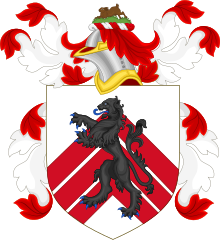
Anyway… getting back to the Winthrops.
Winthrop’s son, often referred to as “the younger Winthrop,” was well known to be a practitioner of Alchemy. He actually had an alchemical lab set up in his father’s home. According to Researcher Kimberly Nichols’ 2012 article published in Newtopia Magazine,.
“As soon as he arrived [the younger] Winthrop set up an alchemical laboratory in his father’s house. There was nothing wrong with practicing alchemy in an elite Puritan household. Winthrop assisted his father and others governing Massachusetts Bay Colony.” –Kimberly Nichols, The Intellegencers and the Fifth Moon of Jupiter: Alchemy in the American Colonies
Hm… 🤔
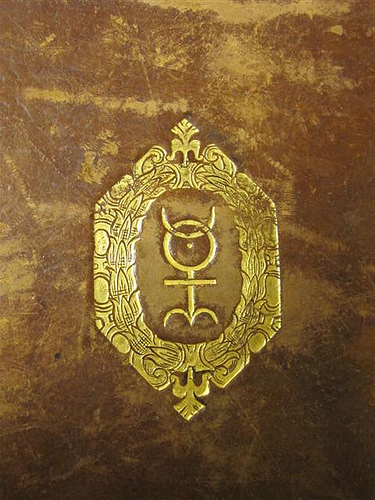
I can hear the argument; That was John Winthrop’s son, not the great leader himself!
Well, first off, we’ve already established his part in the elite class that practiced/practices alchemy. And, I mean, seriously, if my child were ever to go so far as to set up an alchemical laboratory in my basement, I would know exactly what they were into, wouldn’t you? And besides, there’s more to connect Winthrop and the Puritans with alchemy; namely their “new” Postmillennialism.
Puritans /Alchemy / Postmillennial Optimism
Look at this:
“…[A]lchemy looks forward: it is experimental science in the making — science that does not yet acknowledge its finite bounds, but aspires star-eyed to the illimitable possibilities…” – The Remonstrant, George Lyman Kittredge pg. 124
Alchemy explains the Puritan Postmillennialism and 19th century Optimism that is completely missing from scripture.
Nichols goes on to write,
“Puritan alchemists founded America; sounds like bad fiction but it’s fact. As befits a young republic, the history of the earliest origins of American Metaphysical Religion amounts to a long list of extraordinary characters, daring experiments, and unlikely friendships…. The community of alchemists at home and abroad was in constant touch with each other, eagerly exchanging techniques, results, and useful writing published and unpublished. At the heart of this vital cosmopolitan movement for cultural evolution were the intelligencers, discerning men who were so respected they became gatekeepers. By exchanging letters (sometimes in secret codes), samples, and books with fellow seekers of knowledge across continents and oceans they became the Internet hubs of their day. – Kimberly Nichols (bold & underline added)
Other writers have delved into this study that is obscured, if not omitted from Protestant history. In his paper “The Influence of Alchemy in Seventeenth-Century New England: A Historical Analysis of Alchemy in the Puritan Society of Massachusetts and Connecticut” Harvard Scholar of Medieval Studies Greg Kaminsky observes that,
“[T]he alchemical practices and philosophies of [the younger] Winthrop as well as of the many other Puritans who practiced alchemy in New England during Winthrop’s lifetime generally complimented rather than challenged the fundamental themes of New England Puritanism….
The characteristic beliefs held by Christian alchemists and Puritans were in some respects identical. These include the theme of purification, whether it was the alchemists’ metals or the Puritans’ “soul in the crucible of God’s judgment,” in fact both were part of the process of transmutation, or creation of the philosopher’s stone. Edward Taylor, a Puritan minister, alchemist, and poet from Westfield, Massachusetts even used alchemy as an allegory for the process of attaining grace.
[The] recovery of primordial wisdom as mankind’s birthright, the observance of nature as a spiritual act in the attainment of natural philosophy, and millenarian expectations were beliefs shared by alchemists and Puritans alike.” – Greg Kaminsky, Academia.edu
We remember that the “father of modern science” and author of the utopian novel The New Atlantis (America being the New Atlantis), Sir Francis Bacon was a well-known alchemist.
“Bacon’s own system… was essentially an alchemical system based on alchemical precepts, theories, and practices the evidence in Bacon’s works suggests that he saw alchemy as the best way to reveal the secrets of the universe. – Sir Bacon
A Shared Optimism
Alchemy’s optimistic aspirations are shared by the Rosicrucians.
“The Rosicrucian manifesto called for “Universal and General Reformation of the whole wide world.” This idea of an invisible college of spiritually superior human beings benevolently conspiring for the good of humanity to this day catches up novices on the spiritual path, giving them visions of adepts materializing before them like Madame Blavatsky’s telepathic masters. On the one hand scholars…have argued persuasively that a genuine Rosicrucian movement existed, including a variety of secret societies with shared goals. More recently most scholars have taken the position that the Rosicrucians were more like a literary movement, but based on the experimental practice of alchemy as a quest for breakthroughs in medicine, metallurgy and what would become chemistry. – Kimberly Nichols (bold & underline added)
Bacon’s New Atlantis is held to be the Land of the Rosicrucians.
Of course, the same optimism is reflected in the Freemasonic ideal of “becoming.”
I’ll stop there for now. In the next part I’ll take a closer look at Millennialism in general and the pivotal role it plays in Social Justice and the Social Gospel.
Stay Watchful!
I’ve covered some pretty negative things about the establishment of America today, but I don’t want to end on that note. This country has been my home for nearly all my life. I’ve lived in peace, travelled without restrictions, spoken my mind be it right or wrong, gone to church wherever I wanted, had a secure roof over my head, and in spite of pesticides, GMO’s and all, I’ve had access to affordable, nutritious food. I’ve lived among the kindest people who offer a helping hand to their neighbor when needed. Despite the spiritual agenda of the occult, this country has provided me and many others a good life and it is heartbreaking to see it all being systematically torn down.
I spend a lot of time digging into and exposing what the enemy is doing in throughout world. But I don’t want to miss one glaring fact, and that is what a MIRACLE it is that the TRUE Gospel of Jesus Christ still reigns in men’s hearts more than 2,000 years after He walked this earth! As the enemy works relentlessly to deceive and divide us, the Holy Spirit still dwells within to give us faith, hope, discernment, wisdom and love for each other if we’ll only stop to listen. I want you to know that I regularly pray for all of you who read my humble research, ramblings and rants. I’ll close with my favorite prayer of Paul for the church at Ephesus.
For this cause I bow my knees unto the Father of our Lord Jesus Christ,
Of whom the whole family in heaven and earth is named,
That he would grant you, according to the riches of his glory, to be strengthened with might by his Spirit in the inner man;
That Christ may dwell in your hearts by faith; that ye, being rooted and grounded in love,
May be able to comprehend with all saints what is the breadth, and length, and depth, and height;
And to know the love of Christ, which passeth knowledge, that ye might be filled with all the fulness of God.
Now unto him that is able to do exceeding abundantly above all that we ask or think, according to the power that worketh in us,
Unto him be glory in the church by Christ Jesus throughout all ages, world without end. Amen. (Eph 3:14-21)
Revivals Pt1 – Asbury: Let’s Talk About Revivals
Revivals Pt2 – Enlightenment in the Land of the Plumed Serpent
Revivals Pt3 – Mystery Schools, The RCC and the Reformation
Revivals Pt4 – The First Great Awakening & The Enigmatic George Whitefield
Revivals Pt5 – The Brimstone and Mysticism of Jonathan Edwards
Revivals Pt 6 – John Wesley (1 of 2) – The Mystery School Dialectic and Christian Mysticism
Revivals Pt 7 – John Wesley (2 of 2) More Mystics & Papal Doctrines of Men
Revivals Pt8 – From Wesley to Finney By Way of Count Zinzendorf
Revivals Pt9 – Charles Grandison Finney, Freemasonic Moralism and Modern Evangelicalism
Revivals Pt10 – The Pagan “Virus“
Revivals Pt11 – The Third Great Awakening: Pentecostalism!
Revivals Pt12 – Pentecostalism Pt2: The Founders of Pentecostalism
Revivals Pt 13 – Social Justice Pt 1 – They Don’t Mix
Revivals Pt 14 – Social Justice Pt 2 – A City Upon A Hill
Revivals Pt 15 – Christ in You vs Millennialism
Revivals Pt 16 – The Counterfeit Enlightenment Pt 1
Revivals Pt 17 – The Counterfeit “Enlightenment” Pt2: The Dark Ages and Golden Age of Islam
Revivals Pt 18 – The Counterfeit “Enlightenment” Pt 3: Islam In the Bible?
Revivals Pt 20 – The Counterfeit “Enlightenment” Pt5: Placing Man Upon An Esoteric Sphere
Revivals Pt21 – The Counterfeit “Enlightenment” Pt6: The Image of the Beast
Revivals Pt22 – Crowning the Lord of the Earth: The Cosmati Pavement
Revivals Pt24 – The Great American Mythos Pt2: A Whole New Mystically Enlightened World
Revivals Pt25 – Creating the American Mythos – Christopher Columbus: The Great American Hero Pt1
Revivals Pt 26 – Christopher Columbus Pt 2 – The Namesake Goddess of a “Christian” Nation
Revivals Pt27 – The Witchcraft of Numbers
Revivals Conclusion Pt2 – What Is The Gospel?
Revivals Conclusion Pt3 – Subversion – From Revivalists to Modern Times





